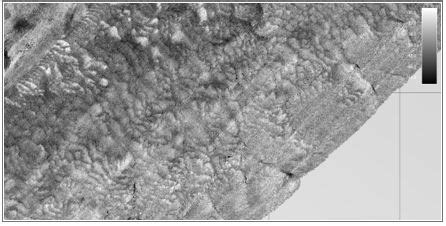Introduction to Ambient Backscatters
Ambient backscatter is an emerging technology that enables ultra-low power wireless communication by leveraging existing radio frequency (RF) signals in the environment. This innovative approach eliminates the need for a dedicated power source, making it an attractive solution for various applications, such as Internet of Things (IoT) devices, smart sensors, and wearable electronics. By harvesting energy from ambient RF signals, such as TV, radio, and cellular transmissions, ambient backscatter systems can transmit data while consuming minimal power.
How Ambient Backscatters Work
Ambient backscatter systems consist of three main components: an ambient RF source, a backscatter transmitter, and a receiver. The ambient RF source can be any existing RF signal in the environment, such as TV broadcasts, FM radio, or cellular signals. The backscatter transmitter is a low-power device that modulates and reflects the incident RF signal to transmit data. The receiver captures the reflected signal and decodes the transmitted information.
The backscatter transmitter operates by switching its antenna impedance between two states, effectively creating a binary modulation scheme. When the impedance is matched to the antenna, the incident RF signal is absorbed, representing a “0” bit. Conversely, when the impedance is mismatched, the RF signal is reflected, representing a “1” bit. By rapidly switching between these two states, the backscatter transmitter can encode data onto the reflected signal.
Advantages of Ambient Backscatters
Ambient backscatters offer several advantages over traditional wireless communication technologies:
-
Ultra-low power consumption: By eliminating the need for a dedicated power source, ambient backscatters can operate on microwatts of power, making them suitable for battery-free or energy-harvesting applications.
-
Cost-effective: Ambient backscatter systems require minimal hardware, reducing the overall cost of implementation compared to conventional wireless technologies.
-
Scalability: As ambient backscatters rely on existing RF infrastructure, they can be easily deployed and scaled without the need for additional network infrastructure.
-
Spectrum efficiency: By piggybacks on existing RF signals, ambient backscatters do not require dedicated spectrum allocation, leading to more efficient spectrum utilization.
Applications of Ambient Backscatters
Ambient backscatters have the potential to revolutionize various domains by enabling low-power, cost-effective wireless communication. Some of the key application areas include:
Internet of Things (IoT)
Ambient backscatters are particularly well-suited for IoT applications, where numerous devices need to communicate with each other and with the cloud. By leveraging existing RF signals, ambient backscatters can enable battery-free or long-lasting IoT devices, such as smart sensors, wearables, and asset tracking tags.
For example, ambient backscatter-based sensors can be deployed in smart buildings to monitor temperature, humidity, and occupancy without the need for frequent battery replacements. Similarly, wearable devices powered by ambient backscatters can continuously monitor vital signs and transmit data to nearby receivers without the burden of bulky batteries.
Smart Agriculture
In smart agriculture, ambient backscatters can be used to monitor soil moisture, temperature, and other environmental factors, enabling precision farming techniques. By distributing low-power sensors throughout the field, farmers can gather real-time data to optimize irrigation, fertilization, and pest control strategies.
Moreover, ambient backscatter-based livestock monitoring systems can track the health and location of animals, allowing for early detection of diseases and improved herd management.
Healthcare and Wellness
Ambient backscatters have significant potential in healthcare and wellness applications. Wearable devices powered by ambient backscatters can continuously monitor vital signs, such as heart rate, blood pressure, and respiration, without the need for frequent charging.
In addition, ambient backscatter-based implantable devices can enable long-term monitoring of chronic conditions, such as diabetes or cardiovascular diseases, while minimizing the risk of battery-related complications.
Smart Cities and Infrastructure
Ambient backscatters can play a crucial role in enabling smart cities and infrastructure. By deploying low-power sensors throughout the city, authorities can gather real-time data on traffic, parking, air quality, and waste management.
Moreover, ambient backscatter-based structural health monitoring systems can detect stress, strain, and vibrations in buildings, bridges, and other critical infrastructure, enabling early detection of potential failures and facilitating preventive maintenance.

Challenges and Future Directions
Despite the numerous benefits of ambient backscatters, several challenges need to be addressed to realize their full potential:
Signal Strength and Range
As ambient backscatters rely on existing RF signals, the strength and range of the backscattered signal depend on the incident RF power. In environments with weak or inconsistent RF signals, the performance of ambient backscatter systems may be limited. Research efforts are focusing on developing more sensitive receivers and advanced signal processing techniques to improve the range and reliability of ambient backscatter communication.
Interference and Coexistence
Ambient backscatter systems must coexist with primary users of the RF spectrum, such as TV broadcasters, cellular networks, and Wi-Fi systems. Ensuring minimal interference and seamless coexistence is crucial for the widespread adoption of ambient backscatters. Techniques such as cognitive radio, dynamic spectrum access, and interference cancellation are being explored to mitigate interference and enable efficient spectrum sharing.
Security and Privacy
As ambient backscatters transmit data using existing RF signals, ensuring the security and privacy of the transmitted information is essential. Potential threats include eavesdropping, jamming, and data manipulation. Research efforts are focusing on developing secure communication protocols, encryption techniques, and authentication mechanisms tailored for ambient backscatter systems.
Standardization and Interoperability
To foster the widespread adoption of ambient backscatters, standardization and interoperability among different systems and devices are crucial. Efforts are underway to develop common protocols, interfaces, and platforms that enable seamless integration of ambient backscatter devices with existing wireless networks and IoT ecosystems.

Frequently Asked Questions (FAQ)
-
What is ambient backscatter?
Ambient backscatter is a wireless communication technology that enables ultra-low power communication by leveraging existing radio frequency (RF) signals in the environment. It allows devices to transmit data by reflecting and modulating incident RF signals, eliminating the need for a dedicated power source. -
How does ambient backscatter differ from traditional wireless technologies?
Traditional wireless technologies, such as Wi-Fi, Bluetooth, and cellular networks, require devices to generate their own RF signals for communication, consuming significant power. In contrast, ambient backscatter systems rely on existing RF signals in the environment, enabling ultra-low power communication without the need for a dedicated power source. -
What are the main components of an ambient backscatter system?
An ambient backscatter system consists of three main components: an ambient RF source (e.g., TV, radio, or cellular signals), a backscatter transmitter (a low-power device that modulates and reflects the incident RF signal), and a receiver (which captures the reflected signal and decodes the transmitted data). -
What are the key application areas for ambient backscatters?
Ambient backscatters have potential applications in various domains, including: - Internet of Things (IoT): enabling battery-free or long-lasting IoT devices, such as smart sensors, wearables, and asset tracking tags.
- Smart agriculture: monitoring soil moisture, temperature, and livestock health for precision farming and herd management.
- Healthcare and wellness: enabling continuous monitoring of vital signs and chronic conditions using wearable and implantable devices.
-
Smart cities and infrastructure: gathering real-time data on traffic, parking, air quality, and structural health for efficient management and preventive maintenance.
-
What are the main challenges in the development and adoption of ambient backscatters?
The main challenges in the development and adoption of ambient backscatters include: - Signal strength and range limitations due to reliance on existing RF signals.
- Interference and coexistence with primary users of the RF spectrum.
- Security and privacy concerns related to the transmission of data using existing RF signals.
- Standardization and interoperability among different ambient backscatter systems and devices.

Conclusion
Ambient backscatter is a promising technology that enables ultra-low power wireless communication by leveraging existing RF signals in the environment. By eliminating the need for a dedicated power source, ambient backscatters offer a cost-effective and scalable solution for various applications, including IoT, smart agriculture, healthcare, and smart cities.
However, challenges such as signal strength and range limitations, interference and coexistence with primary users, security and privacy concerns, and standardization and interoperability need to be addressed to realize the full potential of ambient backscatters.
As research and development in this field continue, we can expect to see more advanced ambient backscatter systems, innovative applications, and widespread adoption in the coming years. The integration of ambient backscatters with other emerging technologies, such as energy harvesting, edge computing, and artificial intelligence, will further enhance their capabilities and unlock new possibilities for low-power wireless communication.
| Parameter | Description |
|---|---|
| Ambient RF Source | Existing RF signals in the environment (e.g., TV, radio, cellular) |
| Backscatter Transmitter | Low-power device that modulates and reflects the incident RF signal |
| Receiver | Captures the reflected signal and decodes the transmitted data |
| Power Consumption | Ultra-low power (microwatts) due to the elimination of a dedicated power source |
| Cost | Cost-effective due to minimal hardware requirements |
| Scalability | Easily deployed and scaled without additional network infrastructure |
| Spectrum Efficiency | Piggybacks on existing RF signals, leading to efficient spectrum utilization |
In conclusion, ambient backscatter technology has the potential to revolutionize low-power wireless communication, enabling a wide range of applications and fostering the growth of the IoT ecosystem. As research and development continue, we can expect ambient backscatters to play a crucial role in shaping the future of wireless connectivity.

No responses yet